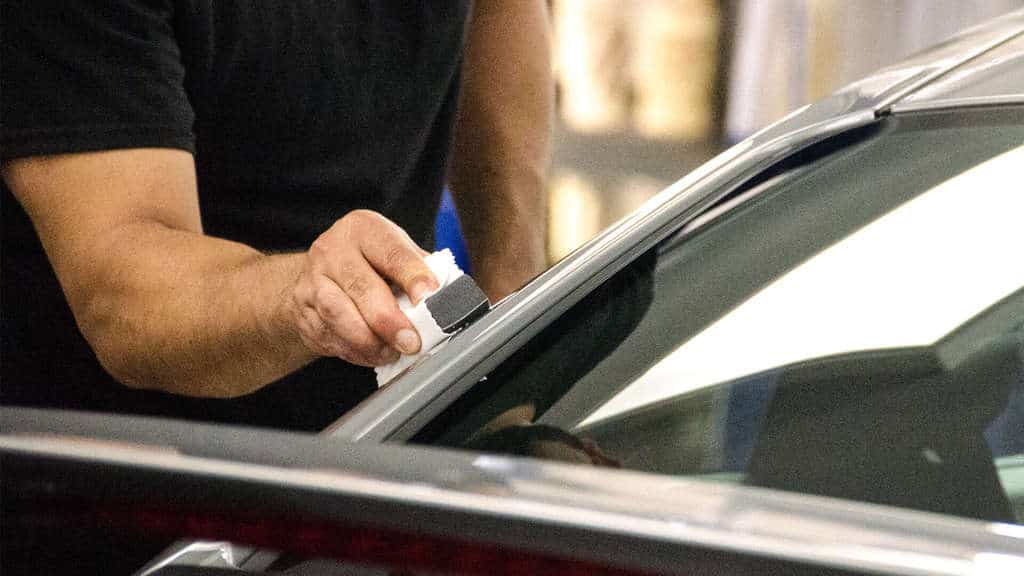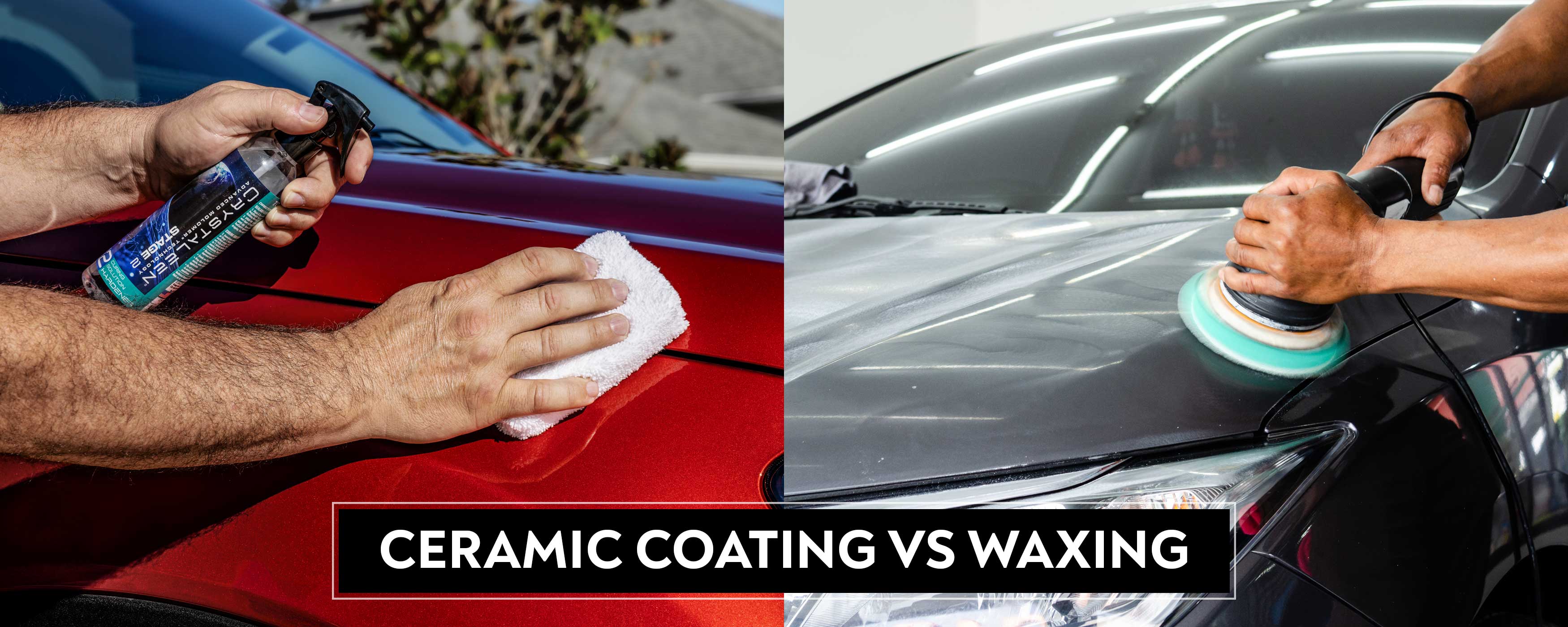Everything You Need to Know About Ceramic Coating for Cars
Everything You Need to Know About Ceramic Coating for Cars
Blog Article
Ceramic Layer vs. Standard Wax: Which Offers Better Long-Term Defense?
The discussion in between ceramic finishes and conventional wax for lorry defense has actually garnered substantial interest among automotive enthusiasts and specialists alike. Ceramic coverings boast premium long life and resistance to ecological variables, yet the intricacy of their application increases concerns regarding availability and practicality.
Review of Ceramic Layer
Ceramic finishing has gained considerable popularity amongst vehicle fanatics and detailers alike because of its sophisticated protective top qualities. This ingenious modern technology is created to produce a resilient, hydrophobic guard over a car's paint surface area, dramatically improving its resistance to ecological contaminants such as dirt, UV rays, and chemical discolorations. Unlike conventional wax, which gives a short-term layer of security, ceramic finishes bond at a molecular degree with the paint, providing durable resilience-- often prolonging past 2 years with proper upkeep.
The application procedure involves precise prep work of the vehicle's surface area, consisting of cleansing and polishing to make sure optimal bond. When used, the coating remedies to create a durable layer that not just includes depth and gloss to the paint but likewise streamlines maintenance. With its hydrophobic residential or commercial properties, ceramic layer allows water and dirt to slide off more conveniently, lowering the frequency of laundries and reducing the danger of swirl marks.
Moreover, ceramic coverings are offered in different solutions, permitting users to select products tailored to their particular needs and preferences. Generally, ceramic layer stands for a considerable advancement in paint defense modern technology, supplying superior performance contrasted to conventional alternatives.
Overview of Standard Wax
Generally considered as a staple in vehicle treatment, wax functions as a prominent choice for those seeking a straightforward approach to boost and shield their automobile's paint - ceramic coating. Automotive wax usually consists of all-natural components, such as carnauba, or synthetic substances, made to develop a safety layer externally of the paint. This layer not just improves the automobile's gloss and shine but also supplies an obstacle against ecological pollutants
The application of wax is normally straightforward, making it obtainable for both specialists and do it yourself enthusiasts. It can be used by hand or maker, permitting versatility in the outlining process. Once used, wax requires a healing duration, after which it hardens to develop a protective covering. Wax is likewise recognized for its capability to ward off water, promoting a beading effect that assists in the prevention of water places and deterioration.
Nevertheless, while wax is effective for improving the visual allure of a lorry, it is very important to note that the security it supplies may require extra regular reapplication compared to alternate items, such as ceramic coatings. On the whole, conventional wax remains a favored option for those prioritizing convenience of usage and prompt aesthetic improvement.
Resilience and Long Life Contrast
While both ceramic finishes and traditional wax offer safety advantages for auto paint, their resilience and longevity differ considerably. Conventional wax, commonly made from natural carnauba or synthetic polymers, normally supplies a safety layer that lasts roughly 3 to 6 months. This fairly short life-span requires routine reapplication to preserve ideal security.
In comparison, ceramic finishings are engineered from innovative nanotechnology, developing a covalent bond with the paint surface. This leads to a robust, hydrophobic layer that can endure for 2 to five years, depending on the item and ecological problems. The remarkable sturdiness of ceramic finishes is connected to their chemical structure, which supplies enhanced resistance to scrapes, UV rays, and oxidation.

Protection Versus Ecological Elements
Shielding an automobile's paint from environmental variables is vital for maintaining its appearance and value with time. Automobiles are frequently he said subjected to a range of aspects, consisting of UV rays, bird droppings, tree sap, acid rain, and roadway grime, all of which can jeopardize the honesty of the paintwork.
Ceramic finishes offer a durable defense versus these ecological aggressors. Unlike standard wax, which can deteriorate swiftly under UV direct exposure, ceramic finishings form a sturdy, hydrophobic layer that resists the damaging impacts of sunshine and ecological pollutants. This advanced innovation produces a chemical bond with the lorry's surface area, providing remarkable defense that lasts for years, even in extreme problems.
Traditional wax, while simpler to apply, commonly needs constant reapplication and offers restricted resistance to impurities and UV rays. With time, it can damage down, leaving the paint at risk to scratches and oxidation. In comparison, ceramic finishes keep their protective qualities longer, considerably reducing the risk of paint damages and making certain that the lorry retains its aesthetic allure. Because of this, ceramic coatings are increasingly recognized as the exceptional option for long-lasting protection against environmental variables.
Application and Maintenance Differences
The techniques of application and subsequent maintenance for ceramic finishings and traditional wax vary considerably, influencing the total user experience and effectiveness of each product. Ceramic coverings need an even more intricate application process, usually including surface area preparation that consists of washing, decontaminating, and brightening the vehicle. Once the surface prepares, the ceramic finishing is used in a controlled environment, usually needing expert knowledge to make sure appropriate treating and bonding to the paint.

While both items enhance car appearance, the longer-lasting security used by ceramic layers may validate their preliminary financial investment, in spite of the more demanding application process. On the other hand, typical wax remains a prominent selection for those seeking a simpler, albeit short-term, service.

Final Thought
To conclude, ceramic finishings show significant advantages over conventional wax in terms of durability and environmental management. With a lifespan anonymous extending two to five years and exceptional resistance to UV rays, dirt, and chemical spots, ceramic this page finishes supply a more efficient option for long-lasting car maintenance. Although the application procedure might need expert expertise, the resulting cost savings and decreased frequency of reapplication underscore the worth of ceramic layers for those seeking optimum automobile security.
The debate in between ceramic finishings and conventional wax for lorry protection has amassed significant interest among auto fanatics and experts alike. Unlike conventional wax, which gives a momentary layer of defense, ceramic layers bond at a molecular degree with the paint, offering durable toughness-- commonly prolonging past two years with correct maintenance.
While both ceramic finishes and conventional wax deal protective advantages for automotive paint, their longevity and long life differ significantly. For automobile lovers looking for lasting protection, ceramic finishes present a compelling benefit over conventional wax items.
In verdict, ceramic coverings show substantial advantages over standard wax in terms of durability and environmental security.
Report this page